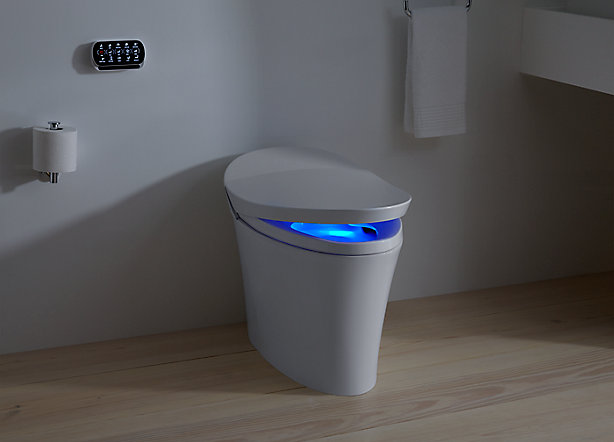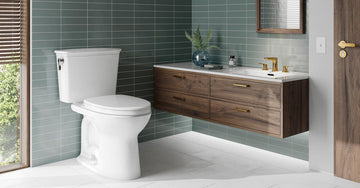In the evolving world of hygiene technology, smart toilet cleanliness sensors are emerging as a game-changer, particularly for the Industry QA sector. With a focus on enhancing restroom hygiene and efficiency, these sensors are set to redefine how we perceive and maintain toilet cleanliness. In this article, we delve into the impact of these innovative sensors and their role in shaping the future of smart restrooms.

The Rise of Smart Restrooms
As technology continues to permeate every aspect of our lives, restrooms are not left untouched. The introduction of smart toilet cleanliness sensors is part of a broader trend towards creating smart restrooms that are more efficient, hygienic, and user-friendly. These sensors can detect various parameters such as occupancy, cleanliness levels, and even predict maintenance needs, ensuring that restrooms are kept in optimal condition at all times.
For more insights into the latest in restroom technology, you can explore this future of toilet technology.
How Cleanliness Sensors Work
The core functionality of smart toilet cleanliness sensors lies in their ability to monitor and transmit data about the restroom's condition. These sensors are typically equipped with various features such as motion detectors, moisture sensors, and air quality monitors. By collecting real-time data, they can alert maintenance teams to take immediate action when a toilet is in need of cleaning or repair.
Additionally, by integrating these sensors with a central management system, facilities can achieve significant cost savings and improve overall restroom management efficiency. You can learn more about smart bathroom innovations in our smart bathroom renovation checklist.
Benefits for Industry QA
For the Industry QA sector, smart toilet cleanliness sensors offer several advantages. By ensuring that restrooms meet hygiene standards consistently, these sensors help prevent potential health hazards. This is particularly crucial in industries where maintaining a high standard of cleanliness is imperative, such as healthcare and food processing.
Moreover, the data collected by these sensors can be used to generate reports and analytics, providing valuable insights into restroom usage patterns and helping to optimize cleaning schedules and resources. For an in-depth look at high-tech toilets, check out this high-tech toilet article.
Challenges and Considerations
While the benefits of smart toilet cleanliness sensors are clear, there are also challenges to consider. The initial installation costs can be high, and there may be resistance from stakeholders accustomed to traditional methods. Additionally, there are privacy concerns that need to be addressed, as these sensors collect data on restroom usage.
Despite these challenges, the long-term benefits of improving restroom hygiene and reducing maintenance costs make the investment worthwhile. For businesses considering the transition to smart restrooms, it's essential to weigh these factors carefully and plan accordingly. For more details on innovative restroom solutions, visit our article on innovative toilet paper alternatives.
The Future of Restroom Technology
As we look towards the future, the potential for smart toilet cleanliness sensors is immense. With advances in AI and IoT technologies, these sensors will become even more sophisticated, offering enhanced functionalities and capabilities. The integration of voice commands, touchless features, and personalized settings could further revolutionize the restroom experience.
For businesses in the Industry QA sector, staying ahead of these trends is crucial. By adopting smart restroom solutions, they can ensure compliance with hygiene standards, improve customer satisfaction, and ultimately gain a competitive edge. For more on future restroom trends, explore this article on the latest toilet innovations.
Conclusion
In conclusion, smart toilet cleanliness sensors represent a significant advancement in restroom technology. By providing real-time monitoring and data-driven insights, they help maintain high hygiene standards and streamline restroom management processes. For the Industry QA sector, embracing these sensors can lead to improved operational efficiency and better customer experiences.
As businesses continue to evolve and adapt to new technologies, smart restrooms stand out as a promising area for innovation and growth. For a comprehensive look at smart restroom solutions, visit our article on toilets with built-in bidet sprayers.

FAQs
What are smart toilet cleanliness sensors?
Smart toilet cleanliness sensors are devices that monitor and collect data on restroom conditions, such as cleanliness levels, occupancy, and air quality, to maintain optimal hygiene standards.
How do these sensors benefit the Industry QA sector?
These sensors ensure that restrooms meet hygiene standards consistently, prevent health hazards, provide valuable data for optimizing cleaning schedules, and help reduce maintenance costs.
What challenges do businesses face when implementing these sensors?
Challenges include high initial installation costs, potential resistance from stakeholders, and privacy concerns related to data collection. However, the long-term benefits often outweigh these challenges.
This article contains affiliate links. We may earn a commission at no extra cost to you.






